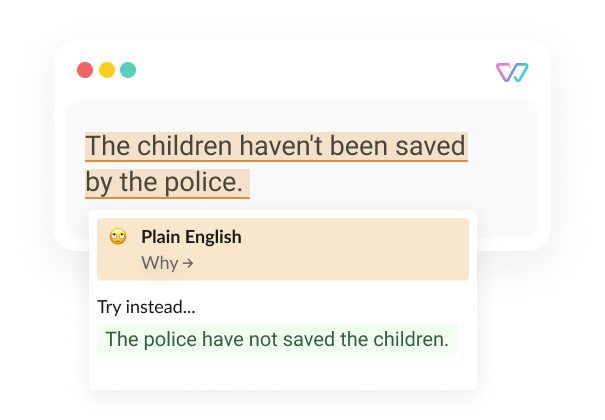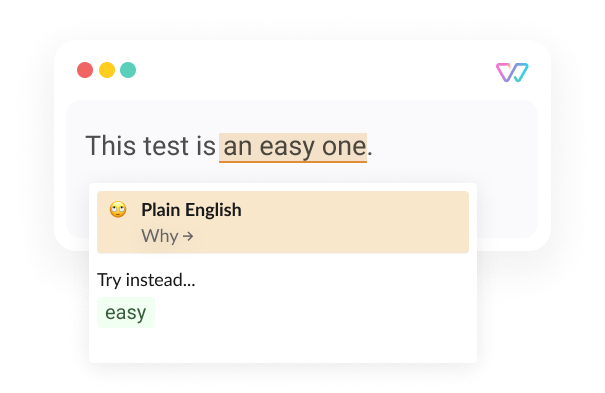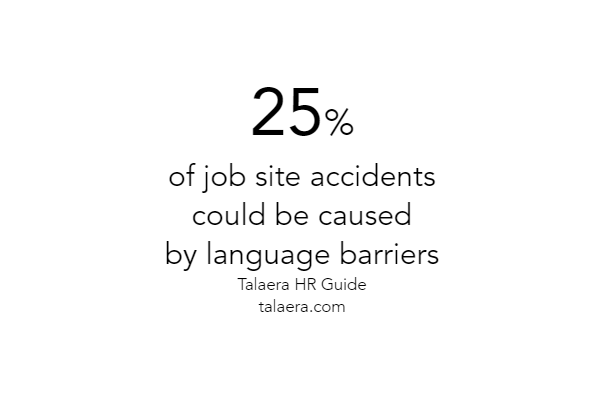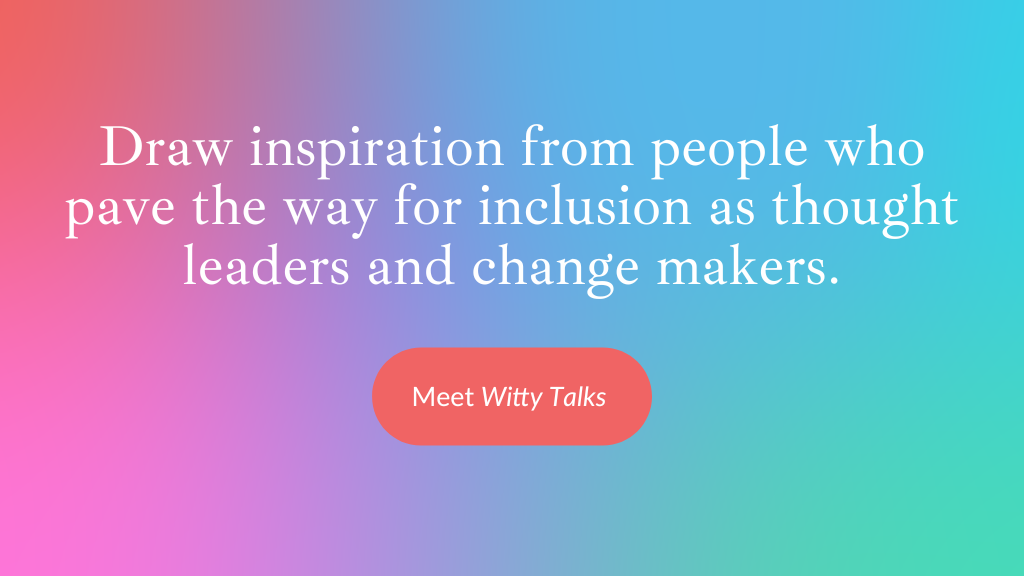 Plain English
Plain English
Helps you avoid mistakes and misunderstandings
To ensure everyone understands, keep language clear, short, and direct.

Exemple de base

Exemple avancé

Every day, we have to read and understand large amounts of information: emails, reports, presentations, and manuals. We share complex subject matter in teams where many speak English as a second language. And more often than not, we're in a hurry. We don't have time to read text twice to make sure we understand all the information it contains. But misunderstandings can be frustrating - and expensive. With clear and straightforward language, you help everyone collaborate effectively, keep engaged and stay productive.
👍
We're launching our new series of aircraft engines soon. Social media marketing will post short statements from influencers in the light sport aviation community. The posts will hint at new features and capabilities. Please watch out for these posts and share them with your followers.
👎
In the light of the upcoming launch of our new series of aircraft engines, SMM will be running teaser posts with testimonials from influencers in the LSA community hinting at new features and capabilities. Be sure to keep an eye out and spread the love.Nous saluons
- What is plain language? (The Plain Language Action and Information Network)
- How to manage workplace language and cultural diversity (Talaera)
- Easy English versus Plain English Guide (Centre for inclusive Design)



